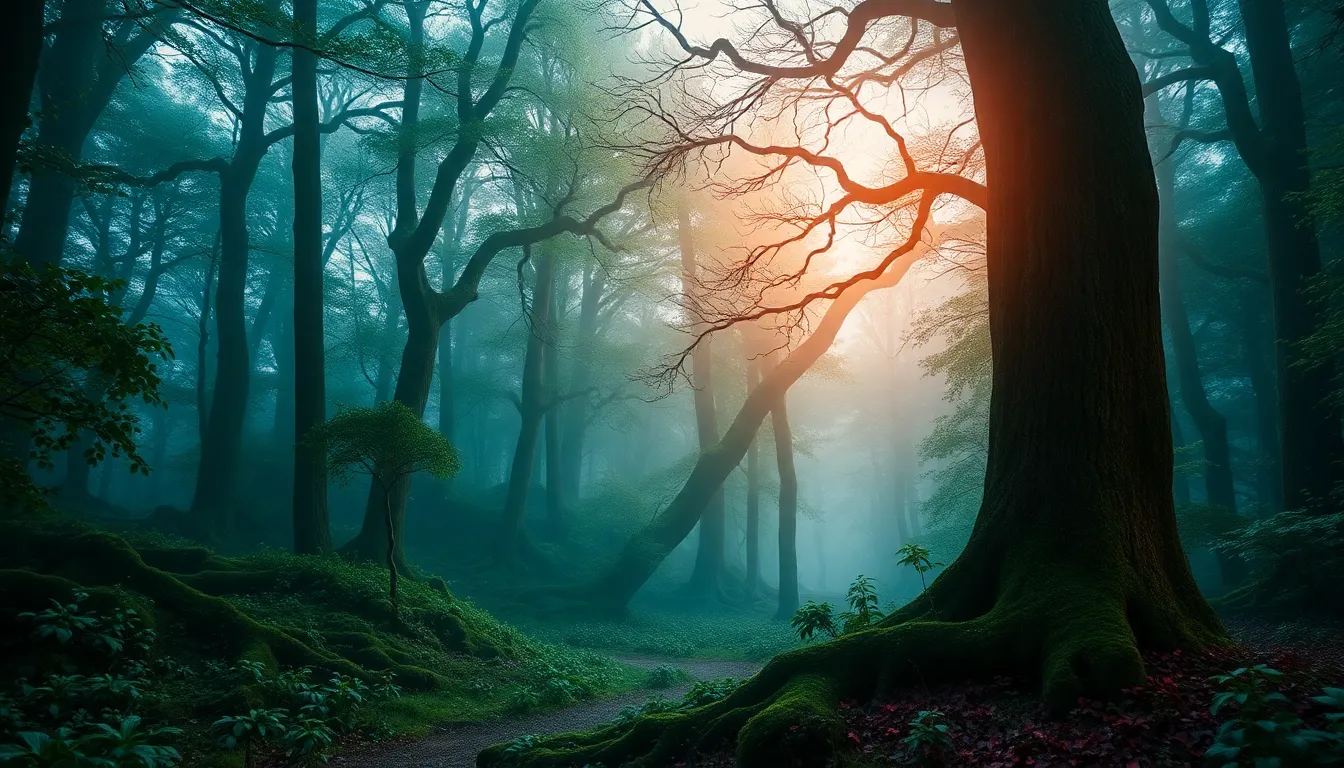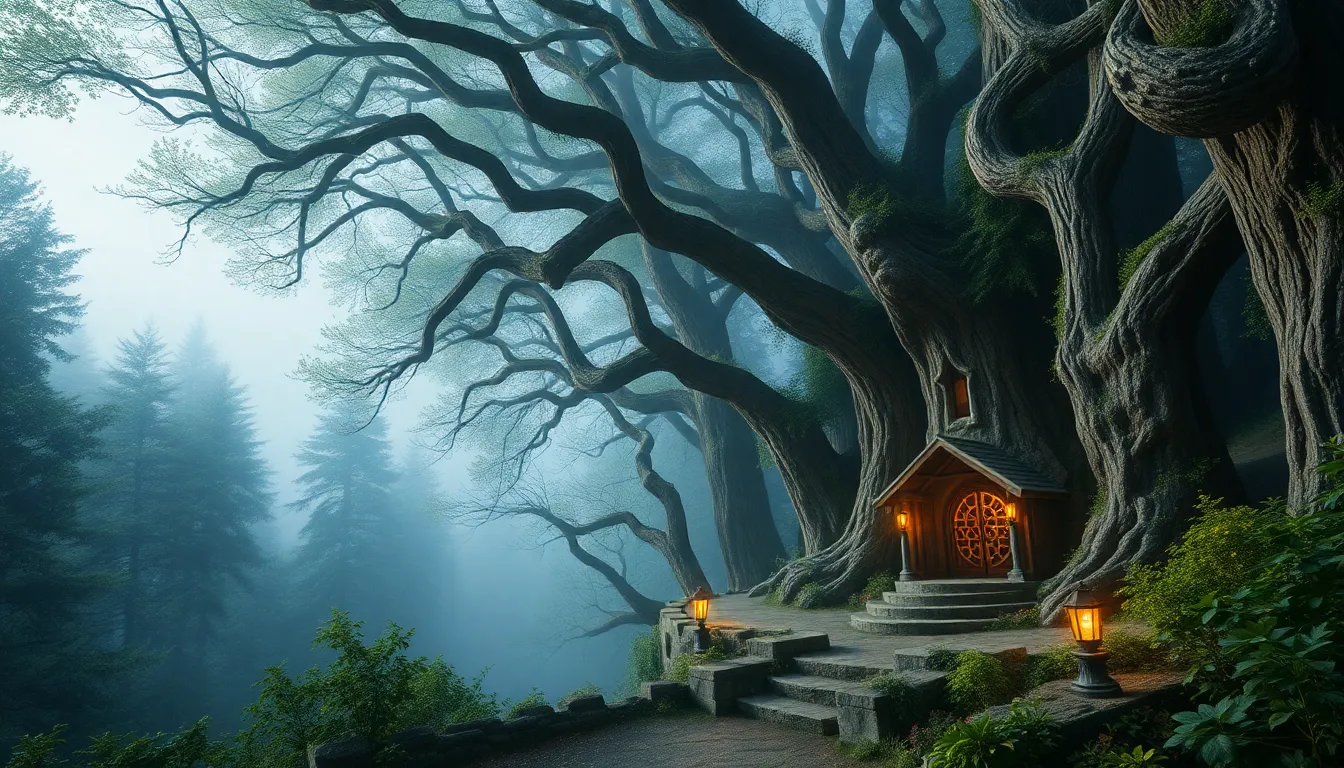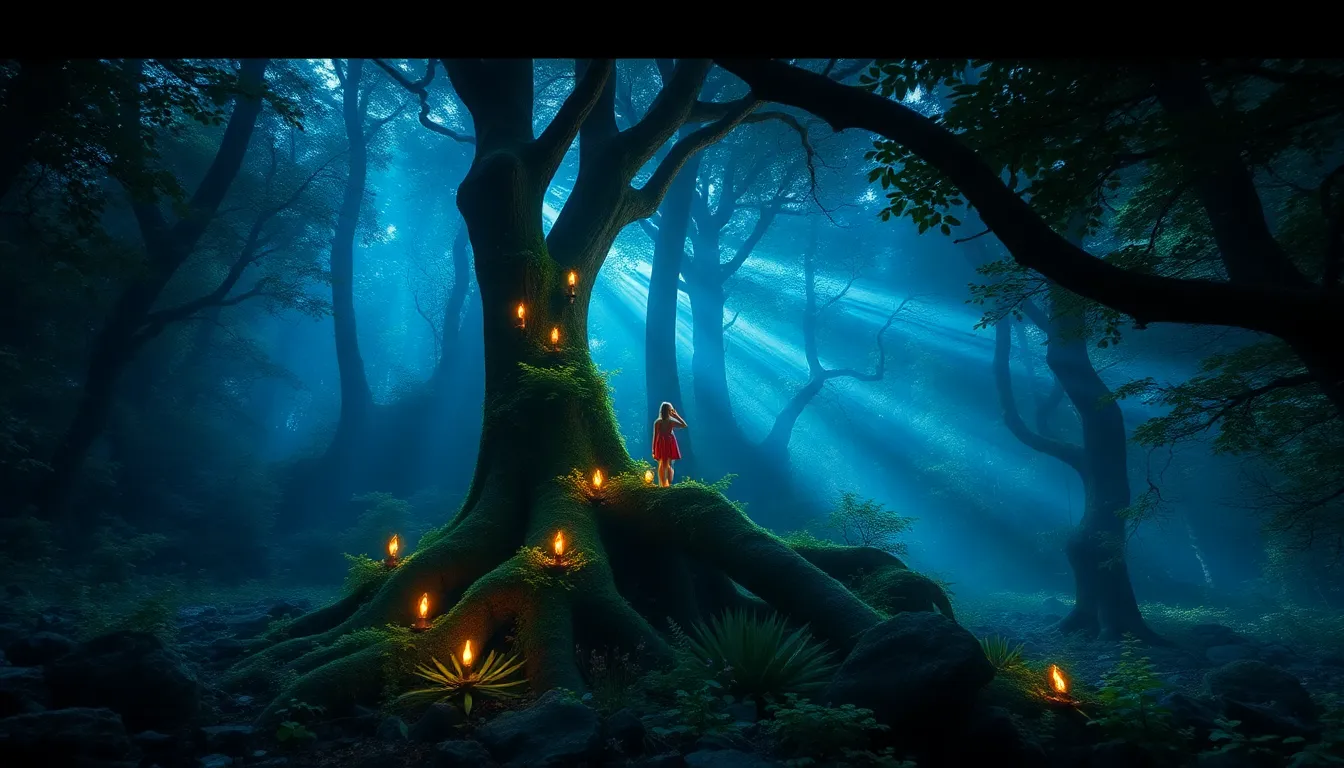The Enchanted Forest: Where Nature Meets Fantasy
I. Introduction
The concept of enchanted forests has long captured the imagination of storytellers and dreamers alike. Steeped in folklore and literature, these mystical woodlands serve as a backdrop for adventures, transformations, and encounters with magical beings. Enchanted forests are more than mere settings; they symbolize the deep connection between nature and the fantasy worlds we create.
Nature plays a pivotal role in fantasy storytelling, providing not only a vibrant environment but also a canvas for exploration and self-discovery. This article aims to delve into the enchanting intersection of nature and fantasy, exploring the historical origins, natural beauty, and modern interpretations of enchanted forests.
II. Historical Origins of Enchanted Forests
Enchanted forests have mythological roots that span across various cultures, each adding unique elements to the narrative of these magical places.
A. Mythological roots in various cultures
- Celtic legends and the Otherworld: In Celtic mythology, the Otherworld is often depicted as a mystical realm accessible through forests, where fairies and immortal beings dwell.
- Greek mythology’s sacred groves: Ancient Greeks revered certain groves as sacred, believing they were inhabited by gods and spirits, thus integrating nature into their religious practices.
B. The role of enchanted forests in fairy tales
Enchanted forests have been integral to fairy tales, acting as gateways to adventure and transformation.
- Examples from Brothers Grimm, Hans Christian Andersen: The Grimms’ tales are rife with stories like “Hansel and Gretel,” where the forest serves as a perilous yet magical setting. Andersen’s “The Nightingale” also features a mystical woodland that reflects the beauty of nature.
- The evolution of enchanted forest narratives: Over time, these narratives have evolved, adapting to cultural changes while retaining their core themes of mystery and enchantment.
III. The Natural Beauty of Forests
The allure of enchanted forests is often rooted in their breathtaking natural beauty, which captivates and inspires.
A. Biodiversity and ecosystems within forests
Forests are rich ecosystems, home to a diverse array of plant and animal life. This biodiversity provides a fertile ground for imagination, where each creature and plant can spark a story of its own.
B. Seasonal changes and their magical interpretations
Each season transforms the forest in unique ways, creating a tapestry of colors and sensations that can feel otherworldly:
- Spring: The awakening of flora and fauna, symbolizing rebirth and new beginnings.
- Summer: A vibrant display of life, filled with warmth and adventure.
- Autumn: A period of transition, where the earth prepares for rest, often associated with reflection.
- Winter: A time of stillness and quiet magic, with the forest blanketed in snow, evoking a sense of calm.
C. Unique flora and fauna that inspire fantasy elements
Many plants and animals within forests have inspired fantasy elements, from towering trees that seem to whisper secrets to elusive creatures that only appear in the twilight.
IV. Elements of Fantasy in Enchanted Forests
Enchanted forests are rich with fantastical elements that enhance their allure.
A. Magical creatures: fairies, elves, and mythical beasts
From fairies flitting among flowers to elves crafting intricate items from enchanted wood, these magical beings enrich the narratives centered in enchanted forests.
B. Enchanted objects and their significance
Objects within these forests often hold significant power:
- Magical trees: Trees that grant wishes, provide shelter, or possess wisdom.
- Enchanted stones: Crystals or gems that hold magical properties, often sought after by adventurers.
C. The role of spells and enchantments in forest settings
Spells and enchantments create a sense of wonder and peril, often altering the landscape or the creatures within it, leading to unexpected challenges for characters.
V. Symbols and Themes in Enchanted Forests
Enchanted forests are rife with symbolism, representing deeper themes in storytelling.
A. Transformation and personal growth
Characters often embark on journeys through these forests, leading to crucial moments of transformation and self-discovery.
B. The journey into the unknown and facing fears
The forest often symbolizes the unknown, challenging characters to confront their fears and insecurities.
C. Nature as a reflection of emotional states
The changing landscapes of forests can mirror the emotional journeys of characters, enhancing the storytelling experience.
VI. Enchanted Forests in Modern Literature and Media
In contemporary literature and media, enchanted forests continue to captivate audiences.
A. Analysis of popular books featuring enchanted forests
- “The Chronicles of Narnia”: C.S. Lewis’s world includes the magical woods of Narnia, where children encounter talking animals and epic battles.
- “The Lord of the Rings”: Tolkien’s Middle-earth features forests like Fangorn, inhabited by Ents and rife with ancient magic.
B. The portrayal of enchanted forests in films and TV shows
Films like “Pan’s Labyrinth” and TV series such as “Once Upon a Time” bring enchanted forests to life, showcasing their beauty and danger.
C. Video games that explore enchanted forest themes
- “The Legend of Zelda”: This iconic series features lush forests filled with puzzles, quests, and mythical creatures.
- “Stardew Valley”: A farming simulation game that includes magical elements and enchanting forest landscapes.
VII. The Psychological Impact of Enchanted Forests
Enchanted forests not only provide entertainment but also have a profound impact on mental well-being.
A. The role of nature in mental well-being
Spending time in nature has been shown to reduce stress, improve mood, and foster creativity.
B. Escapism and the allure of fantasy worlds
Enchanted forests serve as a form of escapism, allowing individuals to immerse themselves in fantastical realms far removed from everyday life.
C. The therapeutic effects of immersive nature experiences
Experiencing forests, whether real or imagined, can have therapeutic benefits, promoting feelings of peace and connectedness.
VIII. Real-Life Enchanted Forests Around the World
While the enchanted forests of our imagination are captivating, they are often inspired by real-world locations.
A. Notable locations that embody the enchanted forest concept
- The Black Forest, Germany: Known for its dense woods and folklore, this region is steeped in mystery and beauty.
- The Fairy Glen, Scotland: A picturesque landscape that feels otherworldly, invoking the magic of fairy tales.
B. Ecological importance and conservation efforts
These locations are not only beautiful but also ecologically important, with conservation efforts in place to protect their unique ecosystems.
C. Tourist attractions and experiences
Many enchanted forests serve as tourist attractions, offering visitors a chance to explore nature while experiencing the magic that inspired countless stories.
IX. Creating Your Own Enchanted Forest Experience
For those looking to immerse themselves in the magic of enchanted forests, here are some ideas to create your own experience:
- Visit local parks and nature reserves: Spend time in wooded areas, appreciating the beauty and tranquility they offer.
- Engage in storytelling: Share stories or read fairy tales set in enchanted forests to evoke the magic of these spaces.
- Nature crafts: Create art or crafts inspired by forest elements, such as leaves, flowers, or stones.
- Mindful walking: Practice mindfulness while walking through nature, paying attention to the sights, sounds, and smells.
In conclusion, enchanted forests are a beautiful fusion of nature and fantasy, offering a wealth of inspiration and solace. Whether through literature, art, or real-world exploration


